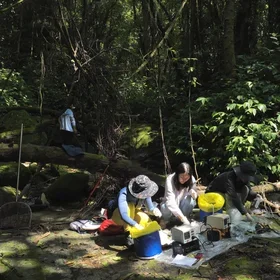By Steve Safier, Ph.D., Human Capital Management Lecturer
Like most other educational institutions, Columbia University swiftly switched to online instruction to protect our students and wider community from the risk of contagion after the COVID-19 outbreak. I thought it might be helpful to share some of my experiences and perspectives for those already teaching online and for those who plan to.
First, by way of background – I had taught one course online prior to the pandemic, and was already teaching another online course this spring, in addition to two on-campus courses. So, I was fortunate to have had online experience prior to the COVID-19 outbreak.
Second, we are fortunate at Columbia to have the Instructional Design, Faculty Assessment and Development and Online Support teams - experts who generously share knowledge and tools to help us teach effectively, whether online or on campus. When the time came for us to transition all our courses to the online modality, our teams were there to help.
Third, our students are smart and committed; they are a joy to teach.
All that having been said, like many readers, I was once wary of online teaching. How could I replicate the engagement that I seek in the physical classroom while relying on a computer screen, a headset, and a plant-filled background?
There are many answers to this question, and I hope you will share your own ideas after reading the following. What I’d like to focus on for now, though, is, building community.
The physical space of a classroom helps us to form community; students sit together and share the learning experience at the same time, exchange ideas in the same room, and perceive nonverbal cues. In the classes I teach, they also often share food (because we’re hungry and I like to snack)! But now, we don’t have these methods available to us.
Here then are 5 ideas for building community in the online environment:
- Start with, “Hello, how are you?” This idea is easy and well known. I like to open the online meeting platform 10 minutes early and spend a little time checking on how the students are faring in school and, if they’re willing to share, at home. As many have noted, this feels particularly important as people struggle with pandemic-related challenges.
- Facilitate discussions with prompts. Generating discussion questions is critical to developing community and, I believe, to teaching effectively. While developing my lesson plans and, again, within a day or two of an upcoming class, I make sure that I note points for myself to stop every 5-8 minutes to ask questions about the lesson. For example, I might ask how what we have discussed applies to their work or how it connects to something we learned earlier in the semester. I want the energy to be shared among the students and me; when classes become unidirectional lectures, energy leaves the room and the sense of community is lost.
- Practice “vertical continuity.” This idea is also simple and yet powerful. I find that drawing connections to discussions from previous classes (i.e., “Where have we seen this point before? How does this point align with a discussion we had three weeks ago?”) gives us all a sense of being together over time. Why “vertical?” Because most syllabi list sessions from the top to the bottom of a page, the progression from earlier classes to later ones is, in fact, vertical. Most importantly, it shows that you’re seriously listening to your students, which builds trust and encourages more input from the students.
- Then practice “horizontal continuity.” In my classes, I strive to make sure that students are talking to each other in the full class discussions and/or in breakout rooms so that they feel that they’re part of a collaborative, shared learning experience. In one class, for example, a student began a thoughtful answer to a complex question but didn’t quite address the entire question. I suggested he reach his arm up at a 45- degree angle and “tap” the student in the video box near him for help. While students did not in fact experience the same view, the point was made that we were all in the class together. (Side note – The “chat” function can also promote communication among students, especially in large classes or for students who are uncomfortable speaking up. However, if appropriate, I ask students not to use chat in class because I prefer that they express any questions or comments verbally to the class as a whole.)
- Embrace your students’ various “personas.” Often, students assume an identity or role in class, such as showing interest in a particular topic or answering questions in a particular way. One student, for example, often answered questions that I posed by saying, “It depends,” and he was usually right; the correct answer to a question I posed typically depended on the particular situation: was the organization I was referring to in our Human Capital Management class experiencing business-as-usual or disruption? Was I referring to a long-tenured employee or a recent hire? This student wisely needed to properly understand the question before positing an answer, and his classmates appreciated this and he became known for this. While I don’t stereotype, I find that recognizing students in this way promotes community in that students like to be known, and to know others, in novel and consistent ways.
What other ideas do you have for building community?



